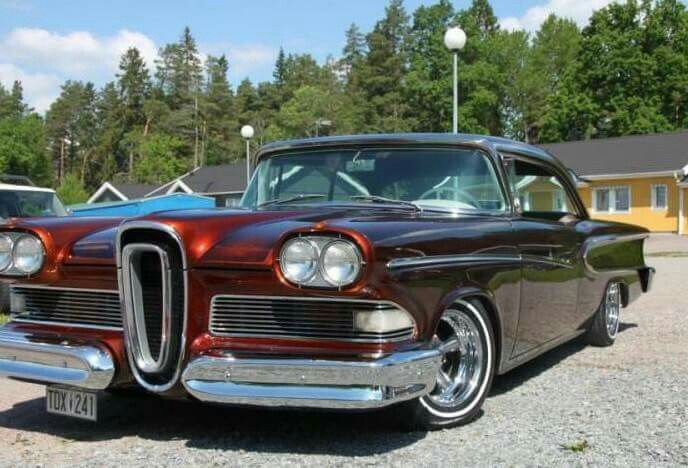The 1950s were a booming time for the American auto industry, with flashy designs and futuristic features defining the era. Ford, eager to capitalize on the trend, decided to create an entirely new brand: the Edsel. With a staggering $250 million investment (an astronomical sum at the time), Ford believed it was crafting the ultimate mid-tier luxury car. Instead, the Edsel became one of the most infamous failures in automotive history.
A Hype Machine Gone Wrong
Ford spent years building up the Edsel’s launch, teasing customers with the promise of something revolutionary. Dealerships were sworn to secrecy, advertising campaigns drummed up excitement, and the company even kept the car hidden under wraps until the grand unveiling in 1957. But all that anticipation fizzled the moment people actually saw the Edsel.
A Design That Turned Heads—For the Wrong Reasons
The most controversial feature of the Edsel was its front grille, which looked unlike anything else on the market. Some thought it was futuristic, but most people mocked it mercilessly, comparing it to everything from a toilet seat to a horse collar. The design, instead of drawing in buyers, became the punchline of countless jokes.
Beyond aesthetics, the Edsel had other problems. Many early models suffered from quality control issues, with poorly fitted parts and mechanical problems. The car was also priced awkwardly—too expensive for budget-conscious buyers but not prestigious enough to compete with true luxury brands like Cadillac.
An Unfortunate Timing
While the Edsel had its flaws, its failure wasn’t just about its looks or price. By the late 1950s, the American economy was heading into a recession, and consumers were less willing to take risks on flashy, expensive new cars. To make matters worse, Ford accidentally leaked images of the Edsel before the official launch, ruining the mystery that had been carefully built up.
The Quick Demise of a Costly Experiment
Sales flopped almost immediately. In its first year, Ford had hoped to sell 200,000 Edsels—but barely managed 64,000. The company tried to revive interest by making changes to the design and lowering the price, but the damage was done. By 1960, just three years after its debut, Ford pulled the plug on the Edsel, ending one of the most expensive misfires in automotive history.
A Legacy of Failure (and Collectibility)
Though the Edsel became a symbol of corporate failure, it has since gained a cult following. Today, surviving Edsels are valuable collector’s items, precisely because so few were sold. Ironically, the car that nobody wanted in the 1950s is now a prized possession for classic car enthusiasts.
The Edsel serves as a lasting lesson in automotive history: No amount of marketing or hype can make up for a car that just doesn’t connect with buyers. Ford learned that lesson the hard way—$250 million later.
